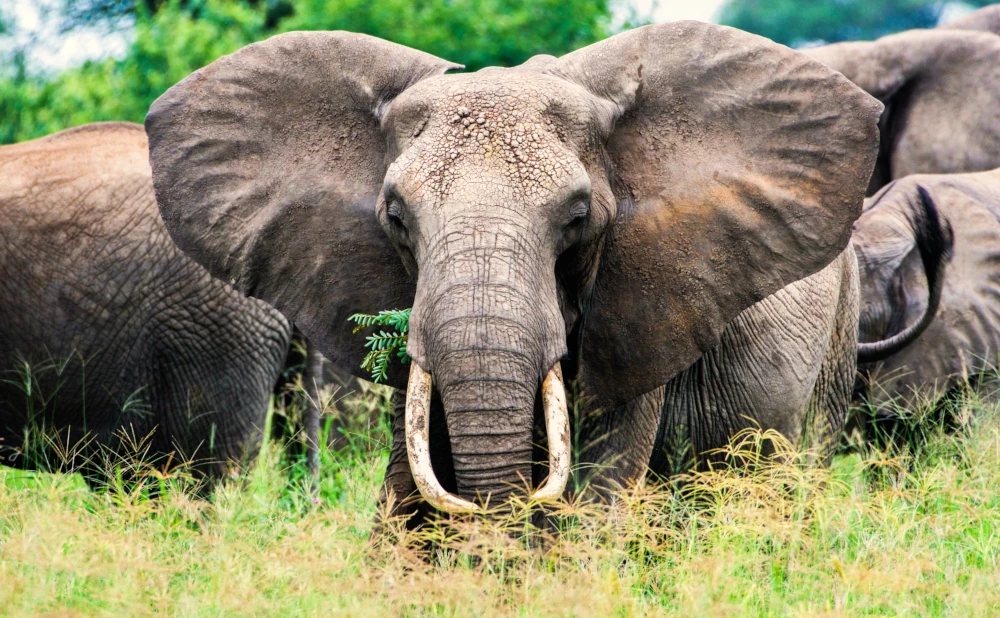
The Big Five: Icons of the African Wilderness
The term Big Five originally described the five most challenging animals for hunters to track and hunt on foot. Today, it represents the most sought-after wildlife species for tourists on African safaris. This renowned group includes the lion, leopard, elephant, buffalo, and rhinoceros. Each species is distinct in its appearance, behavior, and ecological role, forming the backbone of Africa’s wilderness. Here's an in-depth exploration of their characteristics:
1. Lion (Panthera leo)
Physical Description:
Lions are large, muscular cats with short, tan-colored coats. Males are easily recognizable by their manes, which range in color from golden to black, growing thicker with age. Females, lacking manes, are smaller and more agile, adapted for hunting.
Behavior:
- Social Structure: Lions live in prides, typically comprising 10-20 members, including related females, cubs, and a few dominant males.
- Hunting Habits: Primarily nocturnal, they hunt cooperatively, targeting large prey such as zebras, wildebeests, and buffalo.
- Territorial Defense: Males are responsible for protecting the pride's territory from rival males and intruders.
Key Traits:
- Courage: Lions are known for their bravery, often defending their territory against larger predators.
- Strength: Their muscular build and teamwork enable them to take down prey much larger than themselves.
2. Leopard (Panthera pardus)
Physical Description:
Leopards have sleek, golden coats adorned with black rosettes, providing excellent camouflage. They are smaller but more agile than lions, with a muscular build perfect for climbing and stealthy movements.
Behavior:
- Solitary Lifestyle: Leopards are solitary, coming together only for mating or when a mother is raising cubs.
- Nocturnal and Arboreal: They are primarily nocturnal and skilled climbers, often dragging their prey into trees to avoid scavengers.
- Stealth Hunters: Leopards rely on ambush tactics, creeping close to their prey before launching a swift attack.
Key Traits:
- Stealth: Masters of camouflage, they can blend seamlessly into their surroundings.
- Adaptability: Leopards thrive in diverse habitats, from dense forests to open grasslands.
3. Elephant (Loxodonta africana)
Physical Description:
African elephants are the largest land animals, with males weighing up to 6,000 kg (13,227 lbs). Their large, fan-shaped ears resemble the African continent, and they possess long, versatile trunks and ivory tusks.
Behavior:
- Social Structure: Elephants live in matriarchal herds led by the eldest female, with males departing upon reaching maturity.
- Highly Intelligent: Known for their memory and problem-solving skills, elephants use their trunks for communication, feeding, and even expressing emotions.
- Emotional Depth: They display complex emotions like grief, joy, and empathy, forming deep familial bonds.
Key Traits:
- Intelligence: Elephants are considered one of the smartest species, capable of tool use and long-term memory.
- Strong Social Bonds: Their intricate social dynamics are built on cooperation and family loyalty.
4. Buffalo (Syncerus caffer)
Physical Description:
African buffaloes are large, with dark brown or black fur and massive, curved horns that form a protective shield across their foreheads, especially prominent in males.
Behavior:
- Herd Living: Buffaloes form large herds for protection, grazing in grasslands and swamps.
- Defensive Nature: Despite their size, they are prey for lions and are known for their aggressive defense, charging predators when threatened.
- Unpredictability: Buffalos are notorious for their volatile temperament, especially when injured or cornered.
Key Traits:
- Strength and Resilience: Their sheer power allows them to fend off predators with charging force.
- Herd Loyalty: They exhibit strong herd loyalty, often forming defensive circles to protect weaker members.
5. Rhinoceros
(Black Rhino – Diceros bicornis, White Rhino – Ceratotherium simum)
Physical Description:
Rhinoceroses are massive, thick-skinned mammals with two horns on their snouts. The black rhino is smaller, with a hooked upper lip suited for browsing, while the white rhino is larger, with a broad, flat mouth adapted for grazing.
Behavior:
- Solitary Yet Territorial: Rhinos are mostly solitary, except females with calves. Males defend their territory aggressively.
- Poor Eyesight, Keen Senses: Their weak eyesight is compensated by a strong sense of smell and acute hearing.
- Black vs. White Rhino: Black rhinos tend to be more aggressive and unpredictable, while white rhinos are generally calmer.
Key Traits:
- Aggression: Black rhinos, in particular, are known for their readiness to charge at perceived threats.
- Conservation Status: Rhinos face critical endangerment due to poaching for their horns, which are highly valued in illegal markets.
